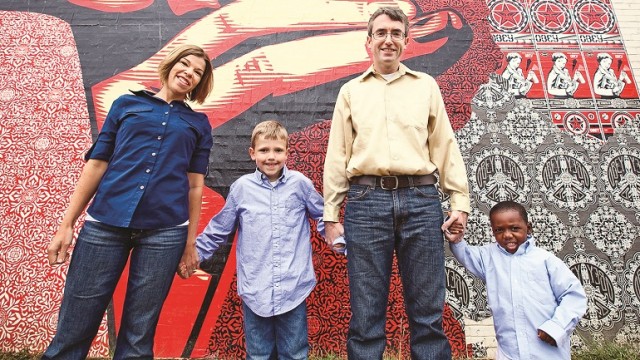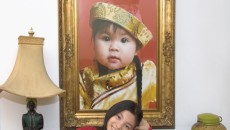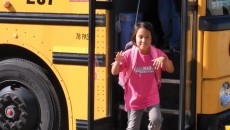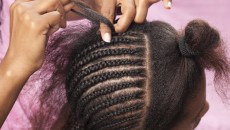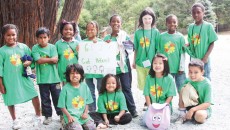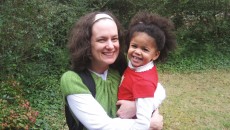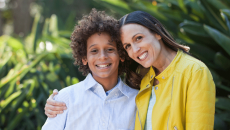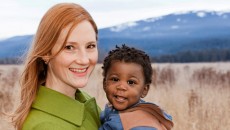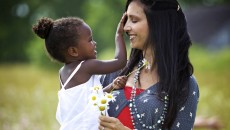For once, the barista at Starbucks didn’t recognize me. He shouldn’t. I’m there only about once a month. The thing is, he remembers me. Well, not me so much as us. This is one of those things that come with being the white mother of a black child. Comments, questions, stares—those I expected. The strange experience of just being visible—not so much. I didn’t realize how invisible I was until I wasn’t anymore.
“The Refrigerator Picture”
When I dressed up my daughter and took a portrait, was I just showing off my cute kid — or perpetuating stereotypes?
“My Most Pressing Back-to-School Task”
After bringing up race and adoption with my children’s teachers at the start of each academic year, I always feel worried and hyper-vigilant. But, invariably, they get it.
Ask AF: On Race and Beauty
Answers to your parenting questions.
“Learning to Care for My Daughters’ Hair”
I felt frustrated, thinking I’d never learn how to cornrow. Now, I show others how to care for tight, curly hair.
Going Camping
Three camp options offer unique ways to explore your childs roots and emerging identity during the summer months.
“Martin Luther King’s Dream Come True?”
When my son was harassed by a classmate for his race, I knew I only had a second to act.
“My Hot Rollers, My Daughter, Myself”
I’ve always had my own issues with hair. But when my daughter came along, my perceptions had to change.
Hooray for Heritage!
How do you honor your child’s origins? Readers share what they’ve done, from summer culture camps or taking homeland (or home state) trips, to everyday ways to reinforce ethnic pride.
View the Parenting After Transracial Adoption Webinar Replay
View the replay of a webinar with Beth Hall to learn about parenting after transracial adoption and hear answers to commonly asked questions from adoptive parents.
“Choosing Which Country to Adopt From (Twice)”
Growing up in a mostly white, Midwestern town in the late 1970s and early 80s, watching reruns of The Donna Reed Show and Leave It to Beaver, I figured I would finish school, find a girl to marry, buy a little house with a white picket fence, and have a couple of kids who looked like me. This was the middle-class American dream, and at the time it never occurred to me that life would turn out any other way.
Love Sees in Color
About a decade ago it was popular to say, “Love sees no color. I really don’t see that my kids are different.” I’m hoping we’ve moved away from that, because it’s just not true. We all notice differences, and, if we say we can’t, we’re denying something.
Raising a Child of Color in America — While White
Our country is far from a “post-racial” society, as this last year has demonstrated. How can you ensure that your child will grow up feeling safe, secure in his identity, and close to your family? Commit to calling out racism and fighting injustice wherever you see it.
Responding to Assumptions About Culture
Children at my daughter’s school assume she speaks Spanish, even though she was raised in an English-speaking family. What can we do?
Ask AF: Comments on Beauty
An adoptive parent asks AF’s expert for help with how to respond when strangers make comments about her children’s appearances.
Ask AF: Affirming Belonging
An adoptive parent whose young child realized her skin color was different asks AF’s expert for help with talking about race and belonging in a blended family.
Question Confidence
Other kids are going to ask about it — so prepare your preschooler for questions about adoption.
Meeting the In-Laws
Our Korean-born daughter is engaged to a Korean man. We’re thrilled — but how do we discuss adoption with his family?
The Elephant in the Room: Handling Racism
We want to start teaching our daughter about racism early on, but we have no idea where to start.
“Who am I?” The Complex Quest of Adolescent Adoptees
Every teen is involved in the complicated process of forming an identity. For adoptees, the process has a few extra layers.
